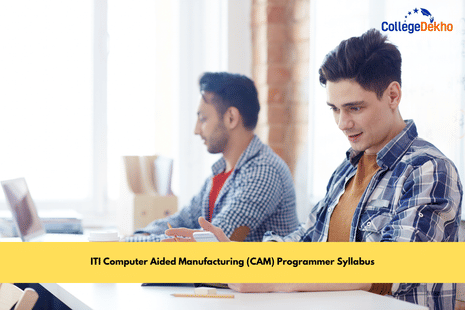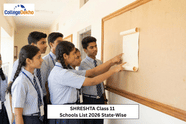-
All necessary guidance is to be provided to the newcomers to become familiar with the workings of the Industrial Training Institute system including store procedures.
-
Soft Skills, their importance, and Job area after completion of training. Importance of safety and general precautions observed in the industry/shop floor.
-
Introduction of First Aid.
-
Operation of electrical mains and electrical safety. Introduction of PPEs.
-
Response to emergencies e.g. power failure, fire, and system failure. Importance of housekeeping & Good shop floor practices.
-
Introduction to the 5S concept & its application.
-
Occupational Safety & Health: Health, Safety and Environment guidelines, legislations & regulations as applicable.
-
Basic understanding of Hot work, confined space work, and material handling equipment.
| -
Introduction to Engineering Drawing and Drawing Instruments.
-
Conventions
-
Sizes and layout of drawing sheets
-
Title Block, its position and content
-
Drawing Instrument
-
Lines- Types and applications in drawing
-
Freehand drawing of Geometrical figures and blocks with dimension
-
Transferring measurement from the given object to the free hand sketches.
-
Freehand drawing of hand tools and measuring tools.
-
Drawing of Geometrical figures: Angle, Triangle, Circle, Rectangle, Square, Parallelogram.
-
Lettering & Numbering – Single Stroke.
-
Dimensioning
-
Types of arrowheads
-
Leader line with text
-
Position of dimensioning (Unidirectional, Aligned)
-
Symbolic representation
-
Different symbols are used in the related trades.
-
Concept and reading of Drawing
-
Concept of axes plane and quadrant
-
Concept of Orthographic and Isometric Projections
-
Method of first-angle and third-angle projections (definition and difference)
-
Reading of Job drawings related to trades.
| -
Unit, Fractions
-
Classification of the unit system
-
Fundamental and Derived units F.P.S, C.G.S, M.K.S and SI units
-
Measurement units and conversion
-
Factors, HCF, LCM, and problems Fractions - Addition, subtraction, multiplication & division
-
Decimal fractions - Addition, subtraction, multiplication & division
-
Solving problems by using a calculator
-
Square root, Ratio, and Proportions, Percentage
-
Square and square root
-
Simple problems using a calculator.
-
Applications of Pythagoras theorem and related problems Ratio and proportion
-
Ratio and proportion - Direct and indirect proportions Percentage
-
Percentage - Changing percentages to decimal and fractions Material Science
-
Types of metals, types of ferrous and nonferrous metals
-
Introduction of iron and cast iron.
-
Mass, Weight, Volume, and Density
-
Specific gravity
-
Speed and Velocity, Work, Power, and Energy
-
Speed and velocity - Rest, motion, speed, velocity, the difference between speed and velocity, acceleration, and retardation
-
Speed and velocity - Related problems on speed & velocity
-
Work, power, energy, HP, IHP, BHP, and efficiency Heat & Temperature and Pressure
-
Concept of heat and temperature, effects of heat, the difference between heat and temperature, boiling point & melting point of different metals and non-metals
-
Scales of temperature, Celsius, Fahrenheit, kelvin, and conversion between scales of temperature. Basic Electricity
-
Introduction and uses of electricity, electric current AC, DC their comparison, voltage, resistance, and their units.
-
Conductor, insulator, types of connections - series and parallel.
-
Ohm's law, the relation between V.I.R & related problems.
-
Electrical power, energy, and their units, calculation with assignments.
-
Magnetic induction, self and mutual inductance, and EMF generation
-
Electrical power, HP, energy, and units of electrical energy Trigonometry
-
Measurement of angles
-
Trigonometrical ratios
|
-
Identify and make a list of drawings, such as assembly drawings, part drawings, and detail drawings.
-
Practice on dimensions, tolerances, symbols, and annotations present in the drawings and understand their meaning and significance.
-
Applying different dimensioning techniques, such as linear dimensions, angular dimensions, and geometric tolerances, based on the requirements of the drawing as per the case study.
-
Perform tolerance analysis exercises to understand how tolerances are applied in manufacturing drawings.
-
Study the impact of different tolerance values on the fit, functionality, and manufacturability as per the case study.
-
Create and interpret section views in manufacturing drawings.
-
Understand how to represent internal features, hidden details, and complex geometries through section views and how they aid in understanding the design and manufacturing requirements.
-
Assign the dimensioning components based on given tolerances. Choose various geometric features, such as holes, shafts, or surfaces, and apply appropriate tolerances based on the functional requirements and manufacturing capabilities.
-
Perform tolerance stack-up analysis on assemblies or sub-assemblies.
-
Apply GD&T symbols on the given industrial manufacturing drawings.
-
Identify and make a list of types that fit in assembly.
| -
Introduction to turning and milling operations.
-
Types of tooling. Types of tool holders.
-
Impact of machining parameters like speed, feed, and depth of cut.
-
Impact on surface finish, and dimensional tolerances.
-
Tools Cutting parameters, Tool geometry, and tool wear.
-
Importance of workpiece material on tool selection.
-
Concept of cycle time, Tact time, Lead time.
-
Comparing cycle time vs Tact time vs lead time.
-
Case study and Importance of calculation in industry.
-
Concept of productivity.
-
Industrial case study for machining shop.
-
List out the turning machine operation.
-
List out the milling machine operation.
| -
CNC Codes are commands used to control the movement and functions of a CNC machine.
-
M Code and its applicability.
-
G Code and its functionality.
-
List out the M code with its functions.
-
List out the G code with its function List out the importance of machine parameters, tool offsets, workpiece zero points, and coordinate systems Orientation of user interface (UI) of cam software.
-
Understand the Uses of the Menu bar (File, Edit, View, etc.)
-
Operation manager, toolpath manager, plan manager, Status bar, graphic window.
-
Make a list of CAM software benefits.
-
Industrial case study for CNC turning operation.
-
Industrial case study for milling machine operation.
|
-
Operation in a total library.
-
Concept about tool selection turning right-hand tools, left-hand tools.
-
Tool file import in a CAM.
-
Concept tooling assembly builder in cam software.
-
Orientation of cam software sketcher toolbar.
-
Plane selection and its importance.
-
2D Sketch concept in cam software.
-
Orientation of 3D modelling toolbar CAM software.
-
Concept of draft angle inspection using cam software.
-
Creating a 3D surface using CAM, quality checks ensure the final 3D surface aligns with specifications. Concept of engraving on a curved surface.
| -
Concept of utilizing transformation tools such as translation, rotation, scaling, and mirroring, adjusting dimensions, creating symmetrical features, or optimizing the overall design.
| -
Concept of holding devices, tool clearance, and access to machining features.
-
Importance of workpiece and tool material properties, tool life calculations.
-
Tool selection criteria. Impact of cutting parameters, cost analysis.
-
Concept of Importing, locating, and quickly re-use fixtures in CAM software.
|
-
Practical steps for stock definition and setup include selecting the appropriate material and concept of handle stock model in advanced cam tool.
-
Concept of roughing and finishing operation.
-
Various strategies to achieve efficient material removal during roughing operations.
-
Benefits of roughing operation.
-
CAM programming using features like flow lines, waterlines, raster milling, and spiral milling, several criteria can be considered.
| -
Orientation of different controllers, proficiency in CAM software usage, accuracy of generated programs, postprocessing abilities, and problem-solving skills.
-
Concept of Error-free CAM programs, and post-process them for specific machine controllers.
-
Validate the CAM Program to detect errors or collisions.
| -
Orientation of different controllers, proficiency in CAM software usage, the accuracy of generated programmes, and postprocessing abilities. Different technologies &processes of CAM: - Using 3d tool path & generate. Convert the toolpaths into machine-specific instructions.
|
-
Concept of in-process inspection of components.
-
Identifying and tagging for Ok, Rework, and reject components and their importance.
-
Identify whether the workpiece is in the reject stage an opportunity to rework, or subprogramme selection.
-
Concept of Post toolpath.
-
The process involves in Post tool path operation.
-
Selection criteria of NC File format.
-
Concept of editing generated NC code.
-
Sending NC Files to the machine.
-
Concept of creation of hole table report in CAM software with coordinates.
| -
Concept and orientation of Art Mode.
-
Concept of 3d model into bounding box Concept of Contour, raster to vector CAM Programming.
-
Importance of CAM software workflows.
-
Concept of toolpath generation parameter effects such as entry points, stopovers, and cutting strategies, on the overall machining performance.
-
Methods of chain selection and its types.
| -
Concept of Complex CAM programming for aerospace components, Healthcare / medical equipment like implants, and surgical instruments with high precision.
-
Concept of generating CAM program for electronic applications.
-
Challenges in generating CAM program for Mill 3D CAM Program Types of different Dies and its machining criteria.
-
3D Mill mould cavity machining criteria and its significant parameters.
-
Concept of the negative impression of Die, Moulds for plastic injection machine. Machining criteria for die-casting components.
-
Industrial case studies.
|
-
Concept of Tagging OK, Rework, and reject.
-
Concept of quality control and quality assurance.
-
Industry case study.
-
Standard operating procedure for machine operators.
| -
Innovation, the Importance of Innovation, how to start a small-scale company offering CAM services, how to manage operations, potential opportunities for entrepreneurship, etc.
|
-
|





















Similar Articles
ITI Admissions in India 2026: State-wise Dates, Online Form, Fees, Merit List, Courses and Fees
West Bengal (WBSCVT) ITI Admission 2026: Registration, Merit List, Seat Allotment
List of Government Jobs after ITI: Job Roles, Eligibility, Salary, Recruitment Process
Best ITI Courses After 12th in 2025: Stream-wise, ITI Courses List, Types of Courses
Tamil Nadu ITI Admission 2026: Eligibility, Trades Offered, Colleges List, and Counselling Process
Jharkhand ITI Admission 2025: Spot Round Admission (Ongoing), Trades Available, Top ITI Colleges, Admission Process